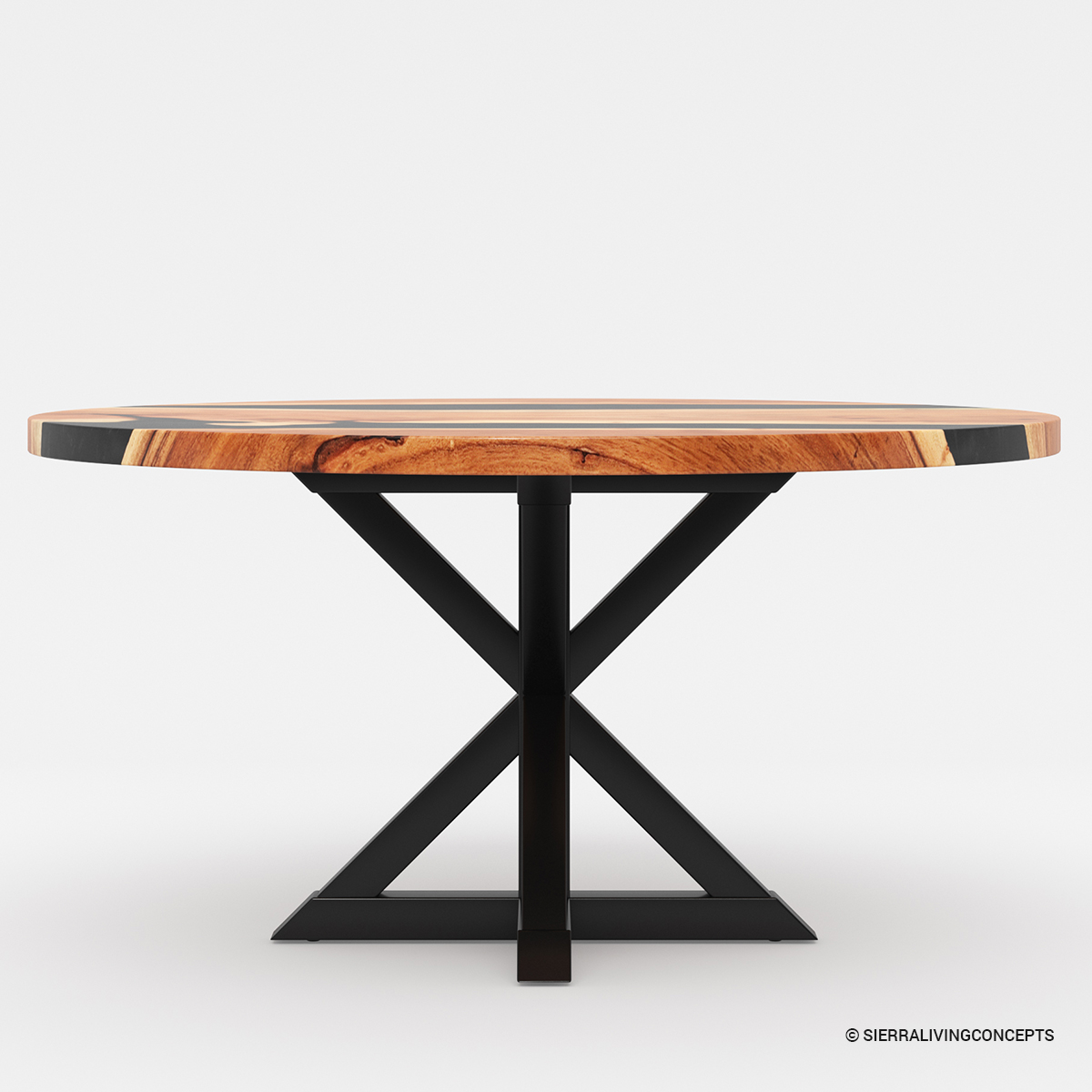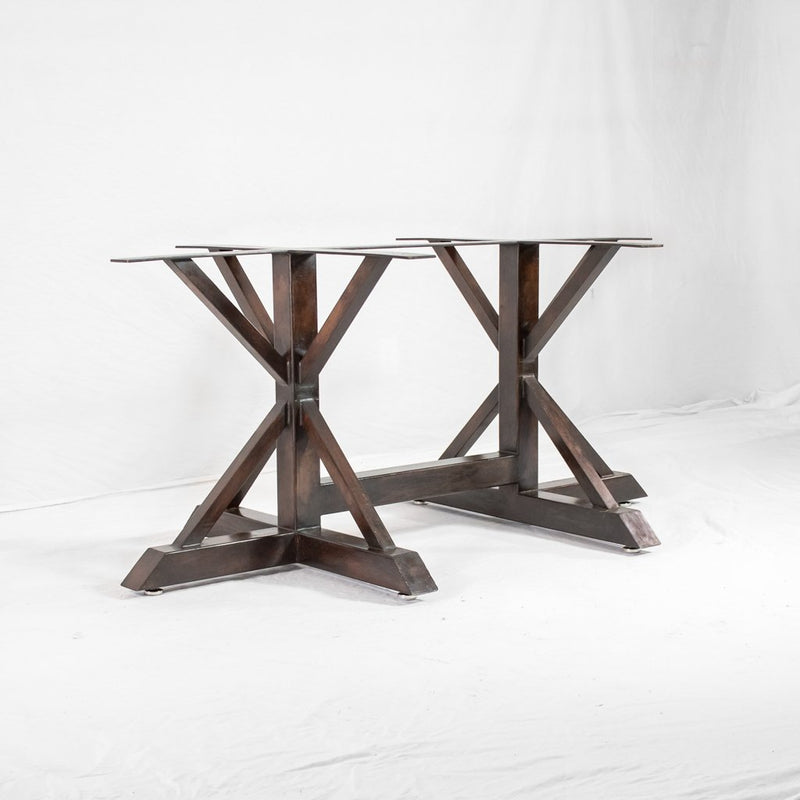Simple Steps to Replacing Old Dining Room Table Legs with New Ones
From Standard to Modern: Discover the Suitable Eating Room Table Legs for Your Design
The choice of dining-room table legs plays a critical duty in specifying the overall personality of your space, connecting the space in between traditional craftsmanship and modern looks. While timeless designs such as cabriole and transformed legs stimulate a feeling of timeless elegance, contemporary styles like barrette and geometric alternatives offer a possibility for striking aesthetic interest. Evaluating the right balance between these styles needs a nuanced understanding of your existing decor and individual taste. As you consider these elements, the question remains: exactly how can you effortlessly integrate these diverse leg styles to produce a harmonious dining experience?
Comprehending Table Leg Styles
The variety of dining-room table leg styles can significantly influence both the visual appeals and capability of the room. Each leg style adds distinct functional attributes and aesthetic aspects, dealing with diverse layout choices and usage needs. Comprehending these styles is essential for picking the right dining table that straightens with your total interior layout vision.
As an example, conical legs use a tidy, timeless look that can improve a room's sophistication, while pedestal bases offer stability and make best use of legroom, making them ideal for smaller sized spaces. Hairpin legs, a characteristic of mid-century modern design, present an industrial style, enabling an airy, open feel. Trestle legs evoke rustic appeal, providing robust assistance and a sense of timelessness.
In addition, the choice of materials plays a significant function. Wooden legs can bring warmth and appearance, whereas metal choices commonly convey a sleek, modern ambiance. Inevitably, understanding table leg styles is essential for producing a natural eating location that shows individual style while ensuring practicality and comfort. By attentively considering these aspects, you can enhance both the aesthetic and practical allure of your eating space.
Standard Table Leg Options
When picking dining-room table legs, conventional options often symbolize timeless sophistication and workmanship. These designs show a rich heritage and a dedication to top quality, making them excellent for those who value timeless aesthetic appeals.
One of the most iconic standard leg styles is the cabriole leg, characterized by its graceful curved shape. This style typically features ornamental carvings and is most frequently located in Queen Anne and Chippendale furnishings. Another prominent alternative is the turned leg, which flaunts a series of smooth, rounded shapes that supply a traditional appearance while maintaining stability.
Additionally, the straight leg, while simple, uses a unadorned and durable structure that can blend perfectly with a selection of tabletop styles. For those attracted to ornate outlining, claw-and-ball feet legs evoke a sense of magnificence and can act as a magnificent focal factor in any type of dining room.
Last but not least, stand bases, although not strictly legs, offer an alternate standard alternative that enables adequate legroom and can be magnificently carved. Each of these standard leg designs adds to the total setting of a dining-room, marrying feature with visual charm.

Modern Table Leg Layouts
Modern table leg designs provide a varied variety of styles that stress innovative materials and tidy lines. These designs commonly focus on capability while functioning as striking prime focus within an eating space. Minimal visual appeals are common, with legs crafted from materials such as metal, glass, and crafted timber, which add to a airy and modern feeling.
One popular design is the barrette leg, go to this website defined by its slim, conical framework that supplies security without overwhelming the table top (dining room table legs). This design is frequently located in mid-century contemporary furniture and can easily enhance various eating table shapes. Another pattern is making use of geometric forms, where legs may handle angular or unbalanced forms, including visual interest and a touch of artistry

Blending Designs for Unique Rooms
Commonly, home owners look for to create special eating areas that reflect their individual design by mixing various style elements. This technique permits the unification of varied aesthetics, causing an unified yet unique environment. For example, coupling a rustic wood table with sleek, modern-day metal legs can produce an attractive contrast that boosts the space's total allure.
In addition, integrating vintage table legs with modern tabletops can stimulate a sense of background while maintaining a contemporary perceptiveness. Such combinations not just showcase private preference but likewise urge imagination, allowing home owners to curate a space that feels both individual and welcoming.
Color plays a crucial role in this mixing process; choosing table legs that enhance or comparison with the existing color system can improve aesthetic passion. Whitewashed legs can soften the boldness of a dark table surface, producing a well balanced visual.
Tips for Selecting the Right Legs
Selecting the right table legs is necessary for attaining both functionality and aesthetic charm in your eating area. Begin by considering the general style of your space. Typical setups take advantage this article of legs that include elaborate makings or turned designs, while contemporary areas may require smooth, minimal designs.
Following, assess the height and security of the legs. dining room table legs. Conventional dining tables vary in between 28 to 30 inches in elevation, so make certain the legs enhance this dimension for comfort. Furthermore, robust products, such as wood or steel, can enhance security published here and durability
Assess the leg shape as well-- choices consist of right, tapered, or stand layouts. Straight legs offer a classic look, while conical legs can include a touch of style. Pedestal bases give adequate legroom and are perfect for smaller spaces.
Verdict
In recap, picking the ideal dining area table legs requires mindful consideration of both standard and modern-day styles. Typical choices such as cabriole and turned legs offer ageless beauty, while modern styles like hairpin and geometric shapes give a modern touch. By harmonizing leg style, height, and product with the total design, a cohesive and welcoming environment can be accomplished. Eventually, the chosen table legs need to show the desired visual, improving the dining experience within the area.
The range of eating room table leg designs can considerably affect both the aesthetic appeals and capability of the room. Ultimately, recognizing table leg styles is necessary for creating a cohesive eating location that reflects personal design while guaranteeing practicality and comfort.One of the most legendary conventional leg designs is the cabriole leg, characterized by its stylish curved form. Straight legs use a classic look, while conical legs can include a touch of beauty.In recap, choosing the optimal dining area table legs requires careful factor to consider of both modern and standard designs.